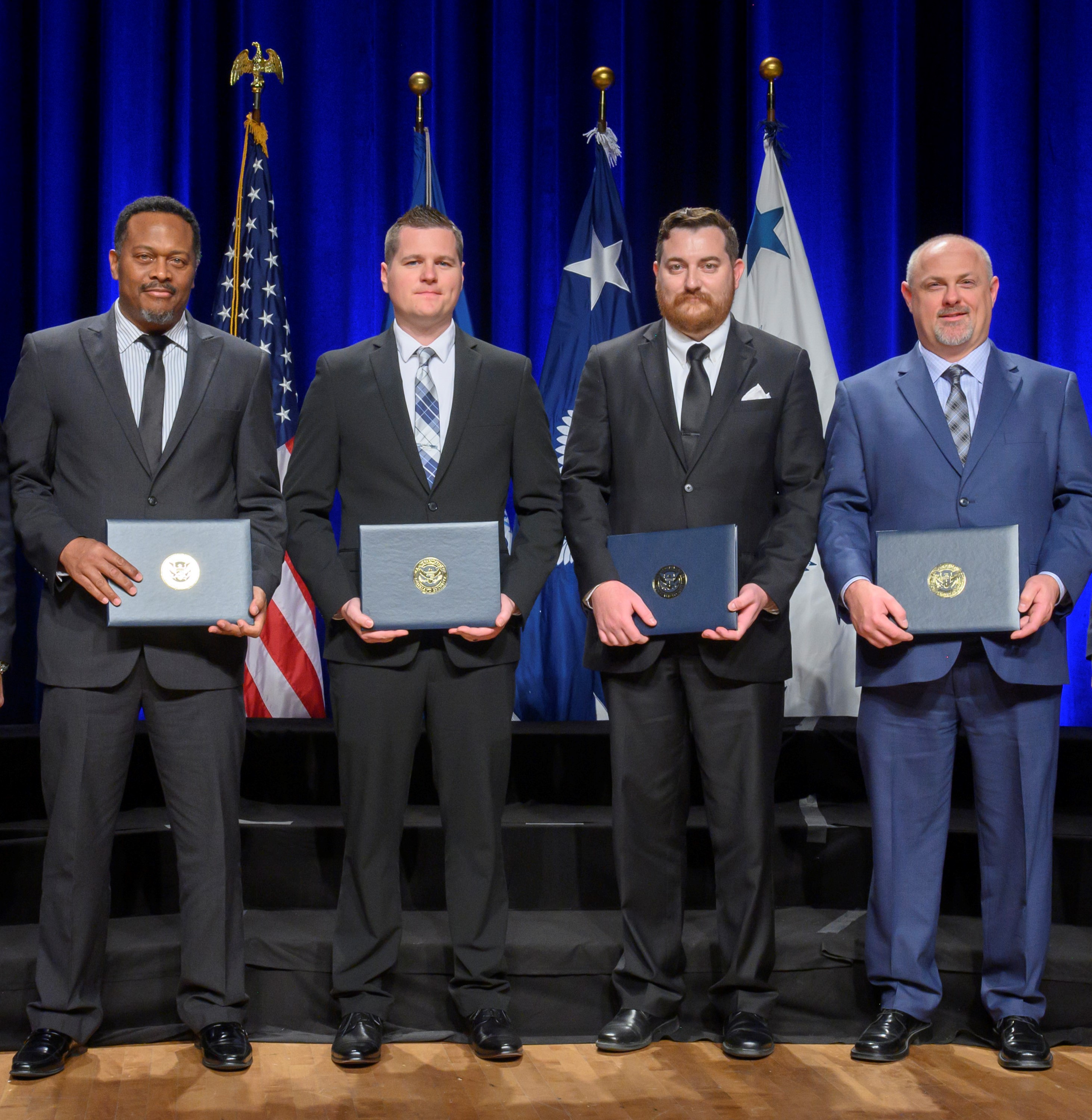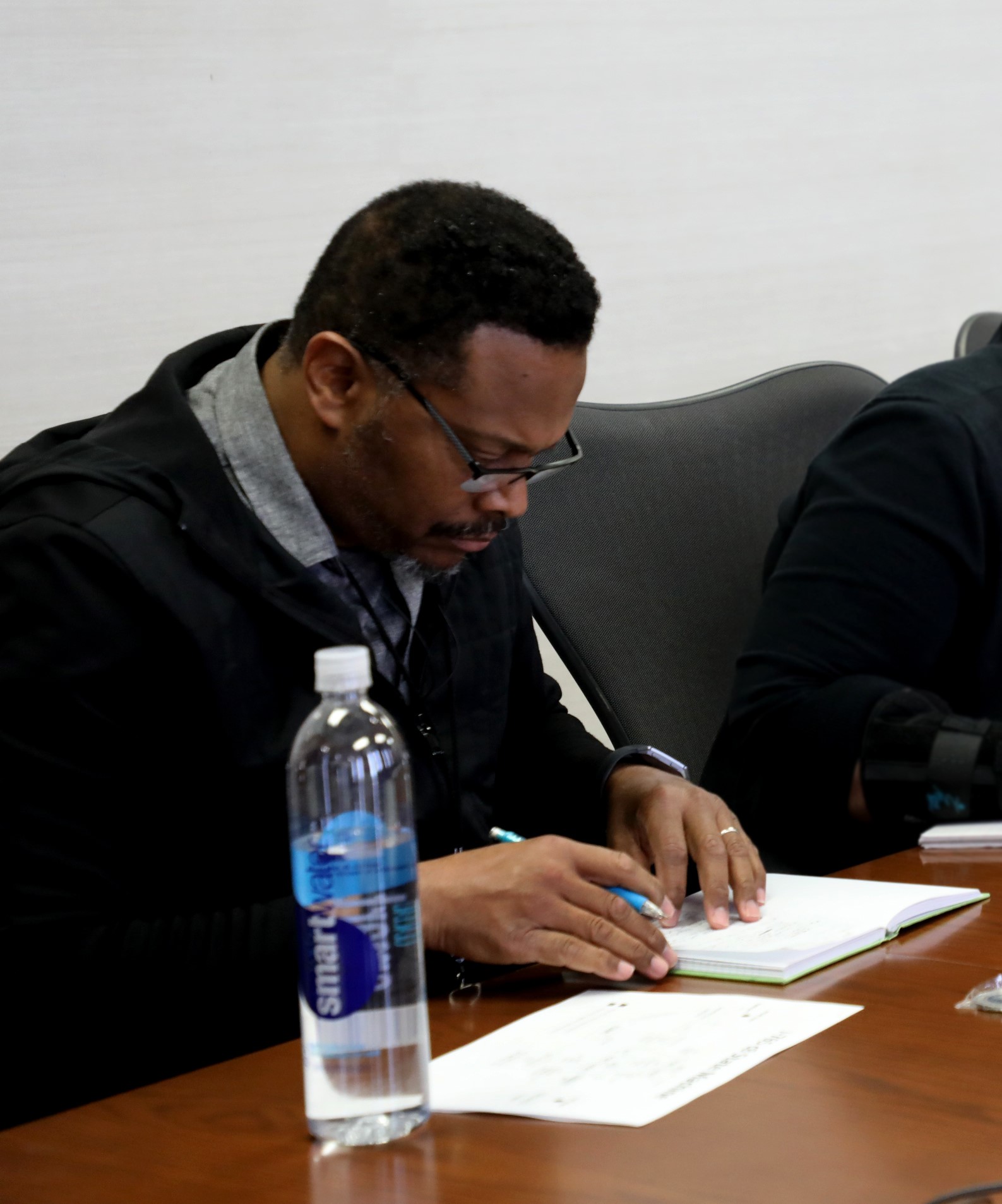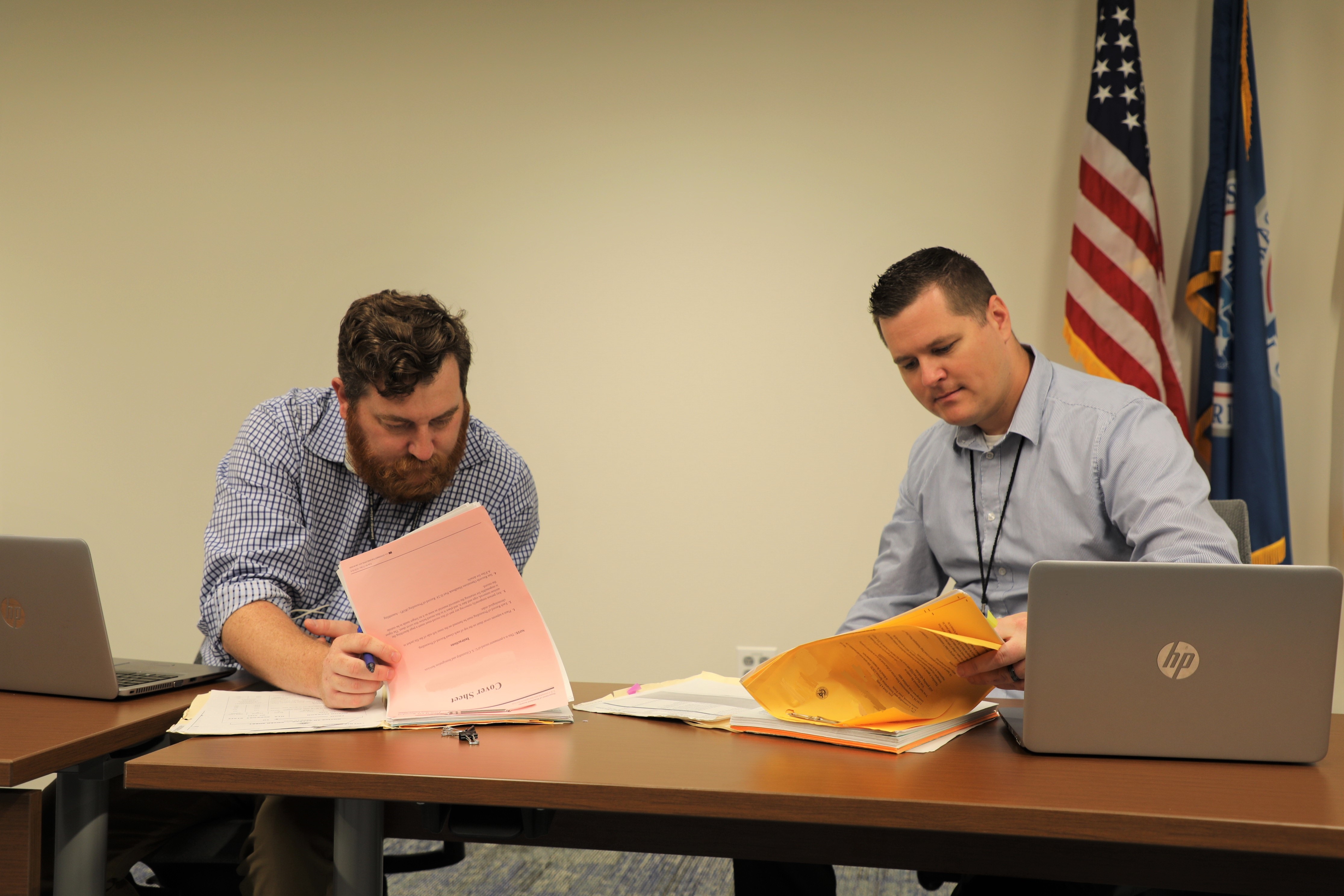
Texas Service Center Background Check Unit Team
Department of Homeland Security

Members: Charles A. Bullard, Jeffery D. Terry, Lawrence W. Barry, James K. Bowen

This DHS team* streamlined the identification of criminal cases for the USCIS’ Background Check Unit by collaborating with partners at the Department of Justice. This work led to a more efficient and effective vetting process, generating a daily average of 600 positive criminal cases, freeing up time for the most critical cases.
The creativity and ingenuity this team took to improve this process is detailed below: Immigration Services Officer (ISO) Jeffery Terry and Supervisory Immigration Services Officer (SISO) Lawrence Barry from the TSC BCU worked with Immigration Services Analyst (ISA) Charles Bullard from the TSC Data Analysis & Reporting Team (DART) to identify all incoming applications and petitions with a criminal record.
The team discovered that the new vetting system would require more resources (e.g., more officers) to individually vet 600 additional filings a day.
In collaboration with the Office of the Chief Data Officer (OCDO) office, the team discovered an existing information sharing agreement with the Department of Justice’s Executive Office for Immigration Review (DOJ-EOIR). Since the discovery of this agreement wouldn’t solve the existing problem of connecting individuals to the data, the OCDO tapped the Data and Business Intelligence (DBIS) team to help with a solution.
DBIS Chief Shawn Benjamin and Emerging Technology Lead Prabha Rajendran created an innovative technology solution that gave USCIS access to the data in aggregate form for the very first time, opening accessibility to the data for all data analysts in USCIS. The solution also allowed the process to perform at a safely-metered throughput-level, where it would remain dependably stable in the long-term.
ISO Terry, ISO Bryan Gee and SISO Barry worked with ISA James Bowen to create a new technological solution, using statistical analysis software, that provided a more efficient way of vetting criminal aliens.
As a result of this collaboration between USCIS and DOJ, EOIR data was made available in a USCIS data warehouse and is accessible and usable by all USCIS analysts. The BCU analysis is completed electronically in seconds, allowing the BCU team to focus their time on criminal aliens not in removal proceedings at a much faster rate. This allows for a more efficient and robust method of identifying, resolving, and referring to the U.S. Immigration and Customs Enforcement (ICE) all criminal cases that are received daily by the TSC. The DOJ-EOIR data was critical to streamlining the process in support of the DHS mission to safeguard the American people and to secure the homeland. SISO Barry shared, “The team is extremely grateful for USCIS’ Data Business Intelligence Support Service and the Office of Chief Data Officer, in particular Chief Data Officer Dr. Matthew Graviss. Their support and work on this program were instrumental to its success.”
*This effort included the collaboration of: DHS’ U.S. Citizenship and Immigration Services (USCIS), Texas Service Center, Background Check Unit Public Safety team, the Office of the Chief Data Officer (OCDO), the Data and Business Intelligence team (DBIS), and TSC data analysts.



